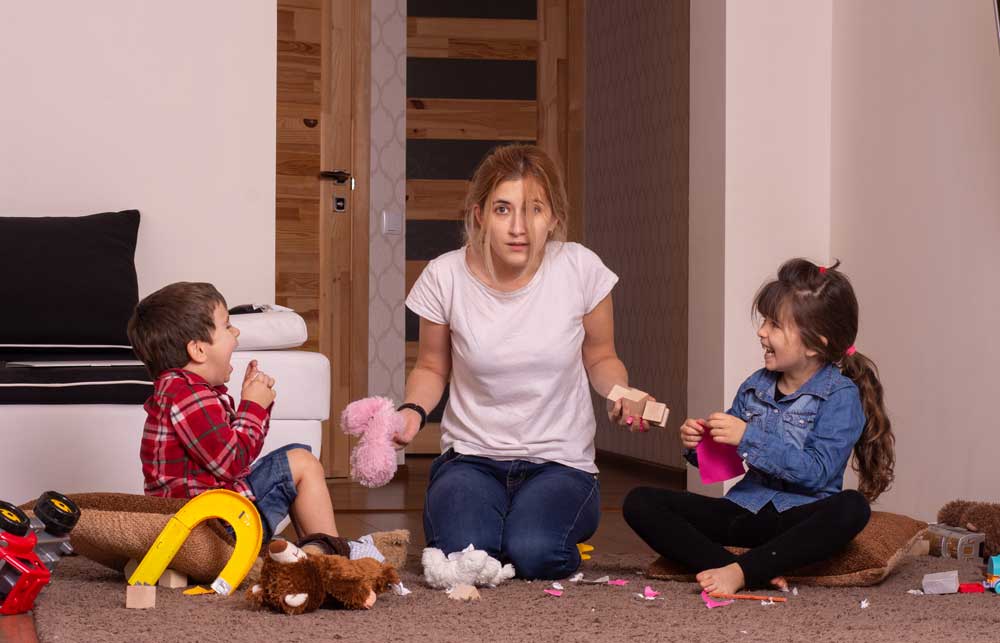Understanding the Hidden Messages
Children’s behavior is like a language. It’s our job as parents, caregivers, or educators to understand their needs, emotions, and thoughts. To build a stronger bond with children and help them succeed, we must understand their behavior and the messages they convey.
This understanding allows us to provide them with the necessary support. This blog “Decoding Children’s Behaviour” helps you understand children’s behavior and find the hidden messages in it.
Behavior as Communication
The Fundamental Principle
Children are constantly communicating through their behavior. Their actions and reactions serve as a window into their inner world. Just as adults use words to convey their thoughts and emotions, children use behavior to express themselves. Recognizing this fundamental principle is the first step in understanding the hidden messages.
Non-Verbal Cues
Children often lack the vocabulary or emotional maturity to articulate their feelings. Instead, they rely on non-verbal cues, such as body language, facial expressions, and actions, to send messages. For example, a child who avoids eye contact or crosses their arms may be signaling discomfort or resistance.
Context Matters
To decode a child’s behavior, consider the context.
What is happening in their life at the moment?
Are they at school, at home, or with friends?
Different environments can trigger varying behaviors, and understanding these contextual factors is crucial for accurate interpretation.
Common Behaviors and Their Messages
– Tantrums
Tantrums are a common and often misunderstood behavior in children. Rather than simply seeing them as disruptive, consider the underlying messages. Tantrums can signal frustration, a need for attention, or a desire for independence. By addressing the root cause, you can help a child cope more effectively.
– Withdrawal
When a child withdraws from social interactions or activities they once enjoyed, it can indicate emotional distress. This behavior might stem from anxiety, bullying, or other factors. Approaching the child with empathy and open communication is essential to uncover the hidden message behind their withdrawal.
– Aggression
Aggressive behaviors, like hitting, biting, or yelling, are often manifestations of unmet needs or pent-up emotions. These behaviors can communicate frustration, fear, or a struggle to express oneself verbally. Understanding the source of aggression is crucial for providing appropriate guidance and support.
– Clinginess
Some children exhibit clingy behaviour, especially during new experiences or separations. This may indicate a need for security and reassurance. By recognizing their need for comfort and providing support, you can assist them in dealing with difficult times.
Emotions and Behaviour
The Connection Between Emotions and Behaviour
Children’s behavior closely intertwines with their emotions. Understanding the relationship between these two elements is vital in deciphering hidden messages. Recognizing that children experience a wide range of emotions, just like adults, is essential.
Teaching Emotional Intelligence
By helping children identify and express their emotions, you can empower them to communicate more effectively. Teaching emotional intelligence equips children with valuable tools to manage their feelings and behaviors constructively.
Parental and Caregiver Responses

– Reacting vs. Responding
How parents and caregivers respond to children’s behavior greatly impacts the child’s development. Reacting impulsively or punitively can lead to misunderstandings and damage the parent-child relationship. Responding with empathy, active listening, and support fosters a healthier emotional connection.
– Building Trust
Building trust with children is essential for them to feel safe in expressing their emotions and needs. Adults establish trust by consistently validating and addressing the hidden messages within children’s behavior. Over time, parents and educators will teach children to value their voices and feelings.
Strategies for Decoding Behavior
Active Listening
Active listening involves giving a child your full attention, asking open-ended questions, and showing empathy. Through engaged listening, you establish a secure environment for the child to express their feelings and ideas, which in turn allows you to more effectively interpret their actions.
Observation
Careful observation of a child’s behavior in various situations can provide valuable insights. Take note of patterns, triggers, and changes in their behavior, and use this information to identify underlying messages.
Effective Communication
Encourage children to express themselves verbally. Create an environment where they feel comfortable sharing their thoughts and feelings. Additionally, model effective communication by openly discussing your emotions and needs.
Decoding Children’s Behaviour - So how can we help?
Innate Therapies in Cairns help understand and decode children’s behavior by exploring their emotions and psychology. For instance, nature therapy, set against the backdrop of Cairns’ natural beauty, allows children to connect with the environment. Being in nature can calm you, reduce stress and anxiety, and help you heal emotionally and grow. Nature therapy allows children to express themselves and show their emotions through their interactions with nature.
Mindfulness, another essential innate therapy, equips children with emotional awareness and self-regulation skills. In an increasingly fast-paced world, children encounter various emotional challenges. Mindfulness helps people recognize and handle emotions, making it simpler to express feelings and communicate needs. Additionally, art therapy provides children with a non-verbal means of expressing their emotions and experiences.
Children’s artwork can help therapists understand their emotions, as mental health professionals interpret their creative expressions. Innate therapies in Cairns assist parents and caregivers in understanding and supporting children as they face emotional challenges while growing up.
Understanding children’s behavior is an ongoing process that needs patience, empathy, and a desire to comprehend their hidden messages. When caregivers understand that behavior is a way of communicating, they can form stronger bonds with the children they care for.
Innate Therapies support them in managing their emotions and facing the difficulties they encounter in their personal and external lives. Remember, every child is unique, and the key to effective decoding lies in embracing their individuality and nurturing their emotional well-being.
When a child is feeling overwhelmed, it is crucial to pay close attention to their emotions and provide them with the necessary emotional support. This involves actively listening to their concerns, validating their feelings, and offering reassurance. By doing so, not only are we helping the child feel better in the moment, but we are also fostering a sense of self-worth and confidence within them.
When we pay attention to a child who is overwhelmed, we are showing them that their emotions are valid and important. This validation helps them feel understood and acknowledged, which in turn can alleviate some of their distress. By actively listening to their concerns, we are demonstrating that we care about their well-being and are willing to provide the support they need.
Furthermore, offering reassurance is essential in helping a child feel good about themselves.
Overall, paying attention to a child who feels overwhelmed and providing them with emotional support is crucial for their emotional development. It helps them feel valued, understood, and capable of handling their emotions. By doing so, we are not only helping the child feel better in the present moment, but we are also equipping them with the tools and resilience to navigate future challenges.
Give us a call today to book in a session.

